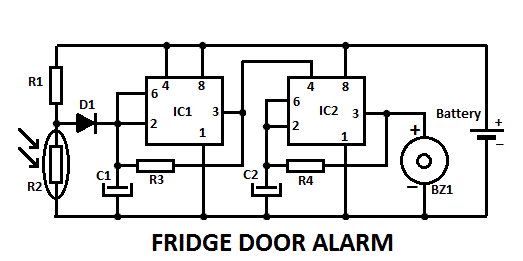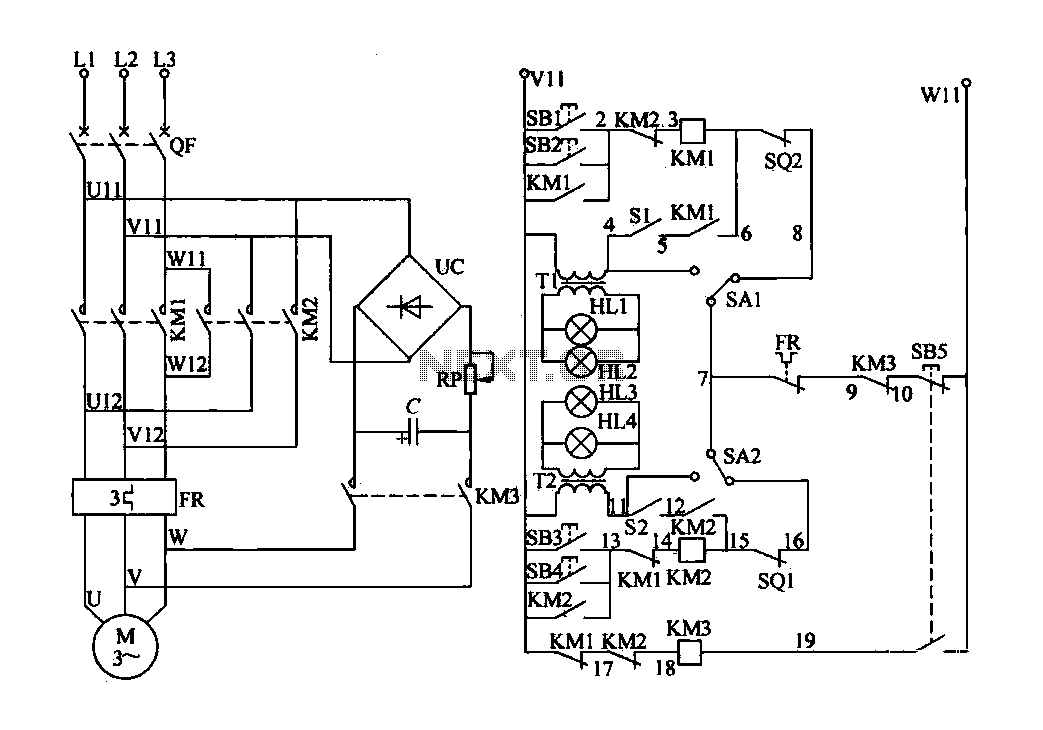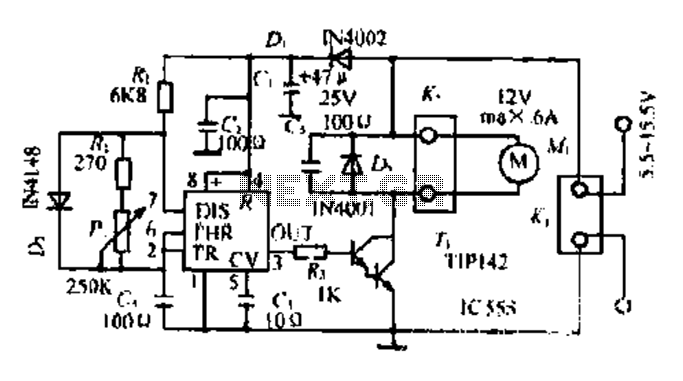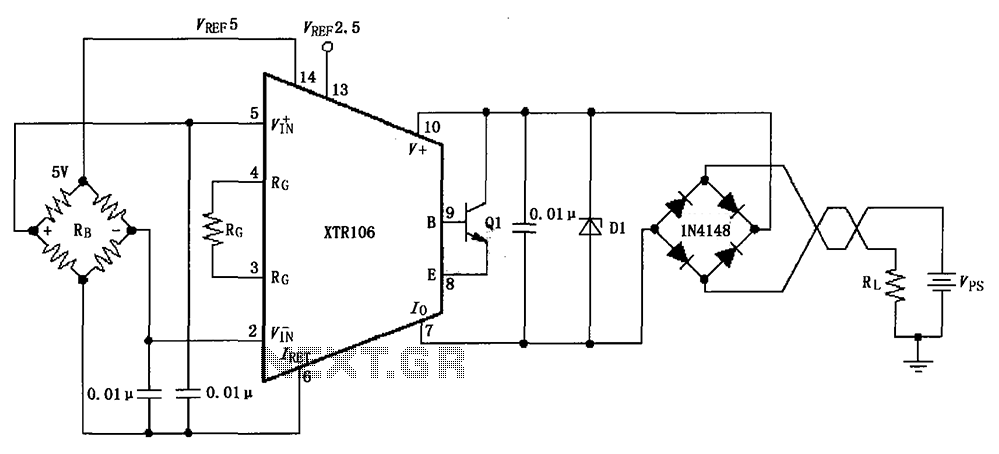
Fridge Door Alarm Circuit

This fridge door alarm operates using a 3V battery supply and should be placed in a small box inside the fridge, near the lamp or close to the opening.
The fridge door alarm circuit is designed to alert users when the refrigerator door is left open for an extended period. The core components of the circuit typically include a microcontroller or a simple logic circuit, a battery power supply, a sensor (often a magnetic reed switch or a tilt sensor), and an audible alarm (such as a piezo buzzer).
The microcontroller or logic circuit is powered by a 3V battery, which is housed in a compact enclosure. This enclosure should be insulated to prevent moisture ingress, ensuring the longevity and reliability of the circuit. The sensor is strategically placed near the door, where it can detect the position of the door when it is closed. When the door opens, the sensor triggers the microcontroller, which initiates the alarm sequence.
The alarm system can be designed to emit a sound after a predefined delay to prevent false alarms from brief openings. The delay can be adjusted based on user preference. The audible alarm is typically a piezoelectric buzzer that produces a loud sound to alert users in case the door is left ajar.
For optimal performance, the circuit can include a low-power sleep mode to conserve battery life when the fridge door is closed. Additionally, a visual indicator, such as an LED, may be incorporated to provide a visual cue when the door is open, enhancing user awareness.
Overall, the fridge door alarm circuit is a practical solution for preventing food spoilage and energy waste, ensuring that the refrigerator operates efficiently.This fridge door alarm is using a 3V battery supply should be placed (in a small box) in the fridge near the lamp or close to the opening. With the door cl.. 🔗 External reference
The fridge door alarm circuit is designed to alert users when the refrigerator door is left open for an extended period. The core components of the circuit typically include a microcontroller or a simple logic circuit, a battery power supply, a sensor (often a magnetic reed switch or a tilt sensor), and an audible alarm (such as a piezo buzzer).
The microcontroller or logic circuit is powered by a 3V battery, which is housed in a compact enclosure. This enclosure should be insulated to prevent moisture ingress, ensuring the longevity and reliability of the circuit. The sensor is strategically placed near the door, where it can detect the position of the door when it is closed. When the door opens, the sensor triggers the microcontroller, which initiates the alarm sequence.
The alarm system can be designed to emit a sound after a predefined delay to prevent false alarms from brief openings. The delay can be adjusted based on user preference. The audible alarm is typically a piezoelectric buzzer that produces a loud sound to alert users in case the door is left ajar.
For optimal performance, the circuit can include a low-power sleep mode to conserve battery life when the fridge door is closed. Additionally, a visual indicator, such as an LED, may be incorporated to provide a visual cue when the door is open, enhancing user awareness.
Overall, the fridge door alarm circuit is a practical solution for preventing food spoilage and energy waste, ensuring that the refrigerator operates efficiently.This fridge door alarm is using a 3V battery supply should be placed (in a small box) in the fridge near the lamp or close to the opening. With the door cl.. 🔗 External reference





